Best Pillows for Back Pain
The majority of adults have experienced back pains at some point in their lives, with some key triggers being spinal injuries, osteoporosis and old age. Unfortunately, sleeping in a poor posture only worsens the problem, causing more pain and further damage.
While investing in a high-quality mattress is a step in the right direction, it is often not enough. Pillows play a vital role in providing back pain relief because they ease pressure from the spine, allowing you to sleep without straining.
However, choosing the best pillows for back pain can be pretty challenging. There are several factors to consider, which is why we have compiled a list of the best pillows for this task and done a deep dive into this health concern.
How common is back pain?
Lumbago or pain in the lower back is surprisingly common, with 75 to 80% of adults in the UK having had this health concern at some point in their lives. Back pain can start anywhere along the spine, from the neck to the hips.
In most cases, back pain gets better with time. However, without taking some measures to relieve it, you might have a recurring or persisting problem.
What causes back pain?
It is not always possible to diagnose the cause of back pain. Most of the time, the origin is either from bones, joints, soft tissues or non-specific. It might be due to a sprain or strain, stress, or a run-down due to overworking.
If these are the causes, you will experience the following symptoms:
- Pain develops suddenly or gradually
- The situation gets better or worse depending on your posture
- Pain becomes intense when moving
- Usually starts to feel better in a few weeks without treatment
However, some medical conditions can cause back pain, and these are easy to diagnose. They include:
- Ankylosing spondylitis - The term refers to the swelling of joints around the spine, which leads to stiffness. It starts off being painful in the morning but gets better as you start moving.
- Sciatica - Sciatica is the irritation of the nerve that runs from the feet to the lower back. It causes weakness in the lower back, numbness, and back pain.
- Slipped disc - If one of the disc cartilages in the spine presses on a nerve, the result can be a tingling sensation, back pain, numbness, and weakness in other body parts.
- Spondylolisthesis - A bone in the spine can slip out of position, and this will cause stiffness, tingling, numbness, and lower back pain.
- Arthritis - Spinal osteoarthritis damages the joint cartilages in the lower back, narrowing the spinal column over time.
- Osteoporosis - Osteoporosis refers to the loss of bone density. It can cause painful tiny fractures to form on the vertebrae (compression fractures).
Some extreme conditions, like an infection, a broken spine bone, severe compression of lower back nerves (cauda equina syndrome) and multiple myeloma (a type of bone marrow cancer), can also cause back pain. If your pain persists and you see a GP, they will look for signs of these medical conditions.
What to do if you wake up with back pain
Stay active
One of the simplest ways of dealing with back pain is to continue carrying out your normal activities or remain as active as possible. Bed rest only serves to worsen the situation as you will require more time to heal. Staying active might be difficult at first, but it will improve gradually.
Heat or ice therapy
For some people, heat therapy using a hot bath or hot water bottle might do the trick. Others find ice therapy more effective to relieve pain and to reduce inflammation. However, do not place ice directly on your skin as this may cause cold burns. You could also alternate the hot and cold therapies.
Stretches
Back stretches and exercises can help to reduce pain as they strengthen the back and abdominal muscles, improving your posture when sitting or during physical activities. Try swimming, walking, or yoga.
Soak in a salt bath
While therapy using a hot bath is highly effective, you can boost the water using Epsom salt. Your body will absorb some of the salt minerals, helping to ease aching muscles.
What to do if you're suffering from ongoing back pain
If the situation intensifies, try these options.
Exercise
Enrol in exercise classes led by qualified instructors. Such sessions will teach you a range of exercises to strengthen your core muscles and improve your posture.
Manual therapy
Manual therapy refers to a group of treatments done by chiropractors, physiotherapists, or osteopaths to massage the area around your spine while applying careful force to make adjustments. The process helps align the spine, and you should do this alongside other measures, like exercising.
Surgery
If you have a serious medical condition, such as a slipped disc or sciatica, the best option to ease your back pain is to undergo surgery. Procedures like spinal fusion and nerve treatment can help solve the issue, but they should be the last resort treatment options if the others fail to work.
Get the right mattress and pillow
Lastly, buy the right mattress, bedding and pillows to ensure you sleep with your spine aligned correctly. You could always invest in a mattress topper to improve the comfort of an older mattress.
How to choose a pillow for back pain
Not all back pain is the same, and so you should take the following factors into account before choosing the pillow that would best provide you with relief:
Loft
Loft refers to pillow height, showing how soft or firm the pillow is when you place your head above it. There are three loft or firmness levels, and you should pick the best one based on your preferred sleeping position.
Front or stomach sleepers should use a soft pillow to ensure the head, neck, and body stay aligned. Side sleepers need firm pillows for the right level of comfort. When sleeping on your side, shoulders place a big gap between your neck and the mattress, which can cause significant misalignment if you use a soft pillow.
If you sleep on your back, the neck stays a bit higher to the mattress compared to front sleeping, but not as high as when sleeping on your side. Back sleepers should use medium pillows, which raise the head slightly to align with the neck and body.
Support and pressure relief
Loft contributes immensely to enhancing support and pressure relief, but you should also consider how well the pillow forms to the shape of your head.
Materials like memory foam cradle your head, providing comfortable support and pressure relief. Even if you use a firm-support pillow, ensure the outer surfaces are soft enough.
Price
Pillow prices can vary depending on what you're looking for. For example, luxury pillows can often feature quilted covers and cooling technologies, making them more expensive.
Breathability
If you are a hot sleeper, look for a pillow with cooling features on the cover. The technology moves sweat and heat from your head, spreading it outwards to the face of the pillow's upper surface so that you sleep comfortably cool and dry.
Breathability also helps with cooling, and it incorporates things like mesh panels to help with air circulation. Fresh scents are scientifically proven to help in promoting more restful sleep, so you might want to consider pillows with such a feature.
What pillow materials are best for back pain?
You need to pick a pillow that suits your condition, and the material used plays a role in determining its properties. The most common ones are:
Hollowfibre
Hollowfibre is very similar to microfibre but has more space between the fibres. As such, it is lighter and more breathable, making hollowfibre pillows better for summer. The material is also cheaper and dries quickly after washing.
Memory foam
The main advantage of memory foam pillows is that the material fits the shape of the head by responding to pressure and heat. Such pillows minimise tension on the neck and straighten your spine. However, the material is not as good at dissipating heat.
Duck or goose feathers
Feather pillows are super lightweight and compress easily to cradle the head. You can adjust their loft by adding or removing the fill to suit front, back, or side sleepers.
Duck or goose down
Down is the fine thermal-insulating under-feathers in birds. The material makes duck down pillows and goose down pillows softer and lighter than their feather counterparts. Also, it compresses easily to give contouring support.
What is the best pillow shape for back pain?
There is no definite best pillow for back pain. However, you can try a few of these different designs to determine which one works better in your situation. Remember to factor in your sleeping position first.
As a back sleeper, a V-shaped pillow might be a good idea as it elevates your head, relieves pressure from the spine, and stops you from tossing and turning. If you have back and neck pains, this pillow for neck pain and back pain will come in very handy.
Contoured pillows are another option. They have a wavy shape with two waves at different heights and a sunken centre. These pillows are versatile and enable you to sleep on your side comfortably.
You can also use a body pillow, which is perfect for elevating different body parts to reduce pressure on the spine and joints.
What is the best pillow position for back pain?
Even though you can sleep on your front, side, or back using a pillow, you can tweak a few things to make the sleeping position more beneficial.
- Side with a pillow between the knees - Placing a pillow between your knees as you sleep sideways squares the hips, minimising pressure on the lower back and straightening the spine.
- Back with a pillow under the knees - Placing another pillow under your knees in the back position tends to prevent pressure from developing on the spine.
- Fetal position - Bend both knees evenly into the fetal position, then curve your upper body towards your knees. It helps form the natural spine alignment, but you must be cautious about weight distribution and ensure body weight is distributed evenly.
Which is the best pillow for back pain?
Although these pillows have one common purpose, to support your back and alleviate the pain, they have varying features to suit different sleepers. The best pillow for back pain depends on what you're looking for and what makes you feel comfortable.
The Slumberdown Luxury Cool Touch Quilted Medium Support Pillow is an excellent option if you want something cooling and supportive. The cover contains Hydrocool technology, which is perfect if you are a hot sleeper. It is made from 100% hollowfibre and the material gives medium support, making it ideal for aligning your neck and head.
Side sleepers should use a firmer support pillow, like the Slumberdown Super Support Firm Support Side Sleeper Pillow, due to its high loft. It features a core block support that holds your head and neck at a raised position on your side, keeping the spine straight to reduce back pains.
The unique contoured shape of the Snuggledown Bliss Memory Foam Contour Firm Support Pillow makes it ideal for neck support. With a design similar to two rising waves, the unit allows you to sleep in three ways while still maximising comfort.
Tips for back pain sufferers
Getting the perfect pillow may help to improve your back pain, but there are some other things to do to ensure you get relief.
- Maintain the correct posture when sitting or during physical activities
- Work and stretch your core and back muscles
- Invest in a quality medium to firm mattress
- Consider using a mattress topper on soft mattresses
- Balance and lighten your load
- Lift heavy items properly
- Wear comfortable shoes
- Practice stress relief
- Get a massage
- Use heat or ice
- Increase vitamin D and calcium in your diet
- Put a pillow under your knees when sleeping
FAQs about pillows for back pain
Can a body pillow help with back pain?
Yes, it can. Since it stretches across the length of your entire body, it conforms to the shape of your frame, taking pressure off the joints and muscles. Whether rectangular, C-shaped, or U-shaped, the pillow stays in place even as you turn, so you will get full body support throughout your sleep.
If you have spinal conditions, like a herniated disk, a body pillow will come in handy. It is ideal for side sleepers and pregnant women as well.
Can the wrong pillow make back pain worse?
Yes. The right type of support is crucial, so you need to be very specific about picking the correct loft for your preferred sleeping position (front, side, or back). Placing the head, neck, and body at uncomfortable angles will misalign your spine, causing worse back pain.
Apart from firmness, choose a pillow that matches your body type and size, including shoulder width, head size, etc.
What is the worst pillow type for back pain?
A pillow that flattens is the worst type for back pain. Whether you sleep on your back, front, or side, you need some level of firmness to keep your head, neck, and body aligned. If the pillow flattens, it will misalign your body and cause more strain on your spine.
With many different pillows to choose from, it's easy to find the perfect option for you at Sleepseeker. We also stock a wide range of duvets, pillow protectors and wellbeing bedding products for you to browse. Read our guide on how to arrange pillows on a bed for guidance on where to place your pillow and discover more about the best pillows for shoulder pain.
Read more of our guides:
What's trending now...
-
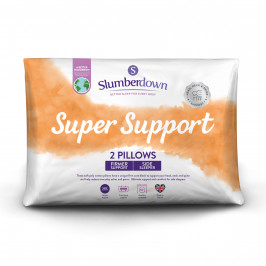
Slumberdown Super Support Firm Support Side Sleeper Pillow, 2 Pack
£17.00
Shop Now -
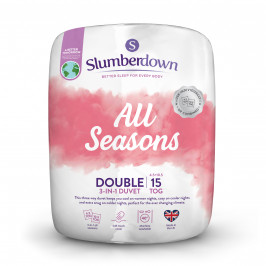
Slumberdown All Seasons Combi 15 Tog (10.5 + 4.5 Tog) Double Duvet
£30.50
Shop Now -
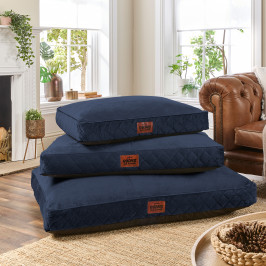
Slumberdown Paws for Slumber Navy Pet Bed, Large
£49.00
Shop Now -
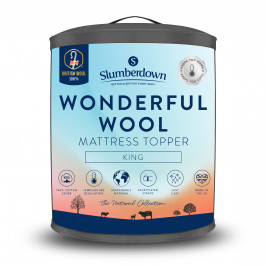
Slumberdown Wonderful Wool Mattress Topper, King
£60.00
Shop Now -

Slumberdown Paws for Slumber Extra Large Pet Bed Spare Cover, Grey
£20.00
Shop Now -

Slumberdown Anti Allergy Mattress Protector - Double
£20.50
Shop Now -
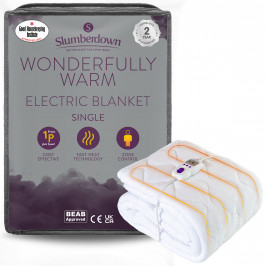
Slumberdown Wonderfully Warm Electric Blanket - Single
£60.00
Shop Now -

Slumberdown Anti Allergy Pillow Protector - Pack of 2
£15.50
Shop Now -
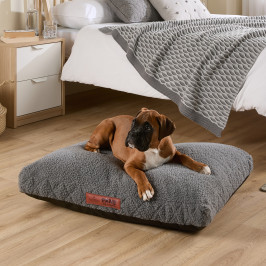
Slumberdown Paws For Slumber Sherpa Pet Bed, Medium
From: £25.00
Shop Now -
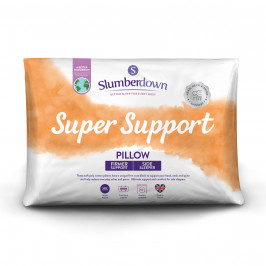
Slumberdown Super Support Firm Support Side Sleeper Pillow
From: £17.00
Shop Now -
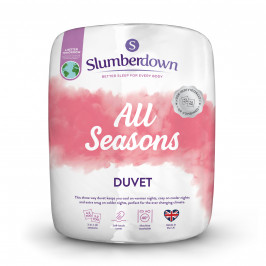
Slumberdown All Seasons Combi Duvet
From: £25.50
Shop Now -

Slumberdown Paws for Slumber Large Pet Bed
From: £49.00
Shop Now -
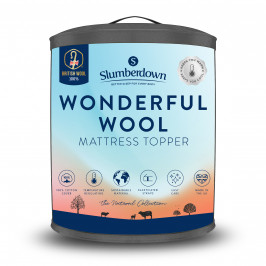
Slumberdown Wonderful Wool Mattress Topper
From: £54.50
Shop Now -

Slumberdown Paws for Slumber Extra Large Pet Bed Spare Cover
From: £20.00
Shop Now -
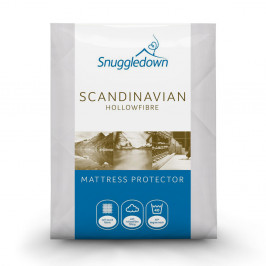
Snuggledown Scandinavian Hollowfibre Mattress Protector
From: £14.00
Shop Now -
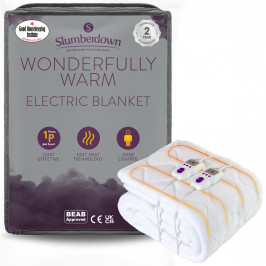
Slumberdown Wonderfully Warm Electric Blanket
From: £60.00
Shop Now -

Slumberdown Anti Allergy Pillow Protector
From: £15.50
Shop Now -
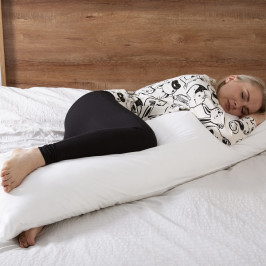
Slumberdown Body Support Pillow, 1 Pack, Includes 100% Cotton Pillow Case
£20.00
Shop Now -
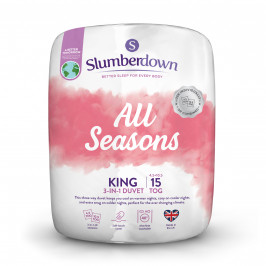
Slumberdown All Seasons Combi 15 Tog (10.5 + 4.5 Tog) King Size Duvet
£34.00
Shop Now -
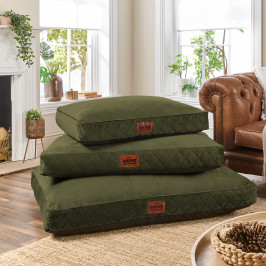
Slumberdown Paws for Slumber Olive Green Pet bed, Medium
£39.00
Shop Now -
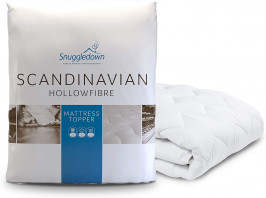
Snuggledown Scandinavian Hollowfibre Mattress Topper - Super King
£35.50
Shop Now




